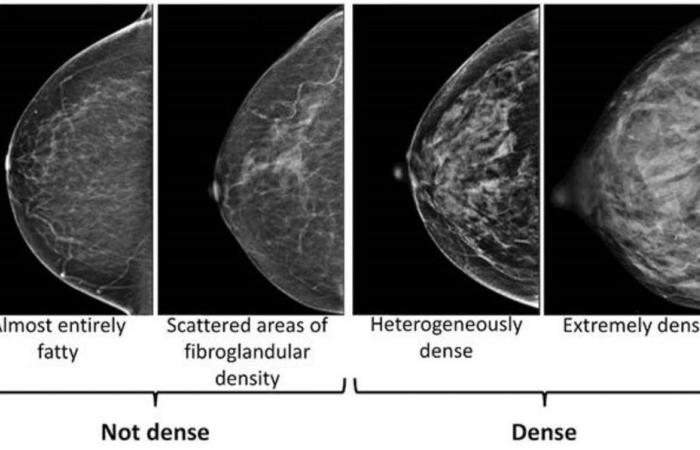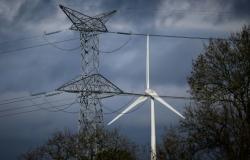When a woman has a mammogram, the most important result is whether there is any sign of breast cancer, but also whether she has high breast density.
Since the beginning of September, a new US rule requires mammography centers to inform women of their breast density – information that is not entirely new to some, as many states already had similar requirements.
Here’s what you need to know about the importance of breast density.
Are dense breasts bad?
No, dense breasts are not bad. In fact, they are completely normal. About 40% of women aged 40 and over have dense breasts.
Women of all shapes and sizes can have dense breasts. It has nothing to do with breast firmness. And that only matters in the world of breast cancer screening, said Dr. Ethan Cohen of MD Anderson Cancer Center, in Houston, Texas.
With the new rule, “there will be a lot of questions asked of a lot of doctors and there will be a lot of Google searches, which is normal. But we want to make sure people don’t panic,” Dr. Cohen said.
How is breast density determined?
Doctors who review mammograms have a classification system for breast density.
There are four categories. The least dense category means that the breasts are almost entirely made up of fatty tissue. The densest category means that the breasts are primarily made up of glandular and fibrous tissue.
Breasts are considered dense in two of four categories: “heterogeneously dense” or “extremely dense.” The other two categories are considered non-dense.
Dr. Brian Dontchos of the Fred Hutchinson Cancer Center in Seattle said the classification can vary depending on the doctor reading the mammogram, “because it is somewhat subjective.”
Why would someone tell me I have dense breasts?
There are two reasons. For one thing, dense breasts make it more difficult to detect cancer on an X-ray, which is the case with a mammogram.
“Dense tissue appears white on a mammogram and cancer also appears white on a mammogram,” said Dr. Wendie Berg of the University of Pittsburgh School of Medicine and chief scientific advisor to DenseBreast-info.org. “It’s like trying to see a snowball in a blizzard,” she said.
Second, women with dense breasts have a slightly higher risk of developing breast cancer because cancers are more likely to develop in glandular and fibrous tissues.
Reassuringly, women with dense breasts are no more likely to die of breast cancer than other women.
What should I do?
If you discover you have dense breasts, talk to your doctor about your family history of breast cancer and ask if you need additional screening with an ultrasound or MRI, said Dr. Georgia Spear of Endeavor Health/NorthShore University Health System in the Chicago area.
Researchers are studying better ways to detect cancer in women with dense breasts. So far, there is not enough evidence to recommend additional screening. The U.S. Preventive Services Task Force called for more research in this area when it updated its breast cancer screening recommendations earlier this year.
Do I still need a mammogram?
Yes, women with dense breasts should have regular mammograms, which remain the gold standard for detecting cancer at an early stage. Mammograms should begin at age 40 for women, trans people, non-binary people, and people of diverse gender identities.
“We don’t want to replace mammography,” said Dr. Spear. “We want to complete it by adding another specific test.”
___
The Associated Press Health and Science Department receives support from the Howard Hughes Medical Institute’s Science and Educational Media Group. The AP is solely responsible for all content.






